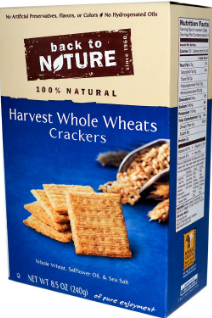Miracle Tuna
This week we learned how to make Miracle Tuna! Made with mayonnaise and a little Dijon mustard (so many good things come from France!), it's simple and tastes great with whole wheat crackers.
So ...what's the miracle?
5th grade girls love Miracle Tuna too!
Almost gone! Miracle Tuna doesn't stick around very long.
"Miracle" Tuna got its name in 2014 from the 4th grade boys at Edgemont School in Montclair, NJ. They say that it's so good, even kids who usually don't like tuna will like it. It must be a miracle! Actually, it's just a simple combination of mayonnaise and Dijon mustard, mixed with tuna and made with love. Click here for the simple recipe...
Look Mom: No bread!
Lunch doesn't have to be tucked between two slices of bread! Sometimes it's fun to smear it on a cracker, or dip a veggie into it. We think it's fun to eat Miracle Tuna served on crackers.
Choosing the best crackers
You can find dozens of crazy-flavored crackers on grocery shelves! Which one should you choose?
The delicious food you make should be the star of your meal! If you choose crackers with lots of complicated flavors, that can distract from the great food you have made with your own two hands. That's why chefs usually like to stick with simple-flavored crackers (or bread, chips, tortillas, etc.) to serve with their food.
We like to serve Miracle Tuna with simple whole wheat crackers such as Back To Nature Harvest Whole Wheats or Nabisco Triscuits (original flavor). Read ingredients carefully! They should contain just whole wheat, oil (such as canola, vegetable or safflower) and salt. (Some manufacturers add Vitamin E to keep the product fresh longer, which is fine too.) Look for brands that contain no icky chemical flavors or preservatives.
Eating Tuna Safely
Did you know that when you're a kid, you brain is still being finished? It's true! Tuna and other cold water fish are great for kids' brains! They contain a type of "fatty acid" that is especially good at helping your brain create healthy nerve endings, which can help you think clearly and feel good for the rest of your life.
But sadly, we can't eat tuna every day. Unfortunately there is mercury in our oceans, a metal which is a form of pollution. Teeny bits of mercury accumulate in the bodies of the fish that swim in the ocean. The bigger the fish, the more mercury can accumulate. When we eat those fish, a little bit of mercury gets into our bodies, too. If you get too much mercury, your brain and nervous system can actually get sick, instead of growing well.
Tuna is a large fish, so we have to be careful not to get too much mercury when we eat it. Since tuna is so good for us in other ways, scientists at the United States FDA and EPA agencies have analyzed the amount of mercury in all types of fish and they tell us that it's safe for "small" children to eat some kinds of tuna once or twice a week.
At Adventure Kitchen, we've read the FDA and EPA analysis, and here's what think makes sense:
Light or Skip Jack tuna has less mercury than other types of tuna, because it's a smaller fish. Based on the EPA and FDA recommendations, you can eat Light or Skip Jack tuna once or twice a week.
Albacore tuna has more mercury than other types of tuna because it's a larger fish. The FDA and EPA say that you can still eat albacore but that you should eat less of it. At the Adventure Kitchen, we recommend children do not choose albacore tuna. Since the smaller tuna species which have less mercury are easy to find in stores, we just stick with those.
You can read all the details yourself on the FDA website.
Click for the Recipe: Miracle Tuna




